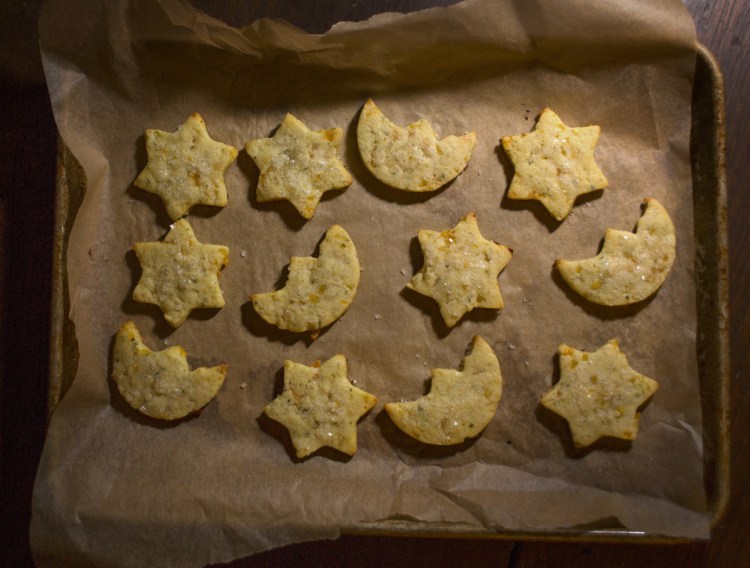When you buy herbs in wintertime in the grocery store, your options are the bunch, the smaller bag, the protective clamshell and the occasional potted plant. The bunch has the least amount of plastic packaging, mainly just a reusable rubber band, so it is typically the greenest option as well as the best bang for your buck. But with a brunch, you’re probably bringing home much more parsley, sage, rosemary or thyme than your recipe calls for. Even if you take care to store it properly – unwashed, rubber band removed, ends trimmed and leaves, stems wrapped in a clean paper or linen towel and the bundles placed in the vegetable drawer – you’ve still got to find ways to either use them or lose them to food waste within the week.
I’ve written many a column on how to preserve extra herbs that may have landed in your kitchen. Chop them, combine them with olive oil and freeze them in ice cube trays. Or make herby compound butters to melt atop grilled steaks, broiled oysters or warm bread. Hang them to dry for future use over the residual heat of your refrigerator motor, ferment them in brine or simmer them into stocks. You can also upcycle leftover fresh herbs into flavored salts, vinegars and simple syrups to give away as holiday gifts.
But this is my first time suggesting you integrate the last of your fresh herbs into your holiday baking. Yes, this is a waste-not, want-not kind of operation. But it’s also a conversation starter. The conversation goes something like this:
“Is that a hint of licorice in these apricot cookies?” asks a friend as she’s sampling the Anytime Tarragon Apricot Cookies you made for your book club’s cookie swap.
“Actually, I added some chopped tarragon I had left over from a chicken salad recipe I made this weekend. I didn’t want the herbs to go to waste, seeing as they had quite a few food miles attached to them and came in a plastic container.”
A sweet, and a little bit savory, teachable moment.

The recipe for Anytime Tarragon and Apricot Cookies makes 60 cookies.
Sweet and savory baked goods of most kinds benefit from an herbal addition. Dairy-based desserts like panna cotta, crème brûlée or puddings can accommodate herbs if you steep them in the milk or cream for 30 minutes before straining the dairy and proceeding with the recipe. The density of scone, biscuits and cookie doughs make them good carriers for herbs because the sturdy structure generally doesn’t get affected by the addition. And, denser cakes and cheesecakes already made with a savory accent like olive oil or goat cheese can benefit from a pop of herbs. To make sure that the aromatic flavor of the herbs is equally distributed throughout the baked goods, its best to chop them finely into the sugar in the recipe.
Add some of the sage left over from the Thanksgiving stuffing to your favorite pumpkin scone recipe. Steep some thyme in the lemon glaze before you pour it over the poppy seed bread you bring to the office holiday party. Consider upping your challah game with a rosemary and fig swirl. Toss some finely chopped winter savory into the brown sugar that coats dough sections of your Christmas morning monkey bread. Chop the remains of the poultry herb trifecta bundle and fold them into your biscuit dough or popover batter for New Year’s brunch.
You can use fresh herbs everywhere in your baking. But you can’t use them with abandon as they can overwhelm any baked good. Err on the lighter side, adding no more than 2 tablespoons of chopped herbs in a single cake, cookie or sweet bread recipe. That amount keeps eaters wondering what the secret ingredient is while still enjoying sweet treat.
ABOUT THE WRITER
CHRISTINE BURNS RUDALEVIGE is a food writer, recipe developer and tester and cooking teacher in Brunswick, and the author of “Green Plate Special,” a cookbook from Islandport based on these columns. She can be contacted at cburns1227@gmail.com.
Send questions/comments to the editors.



Comments are no longer available on this story